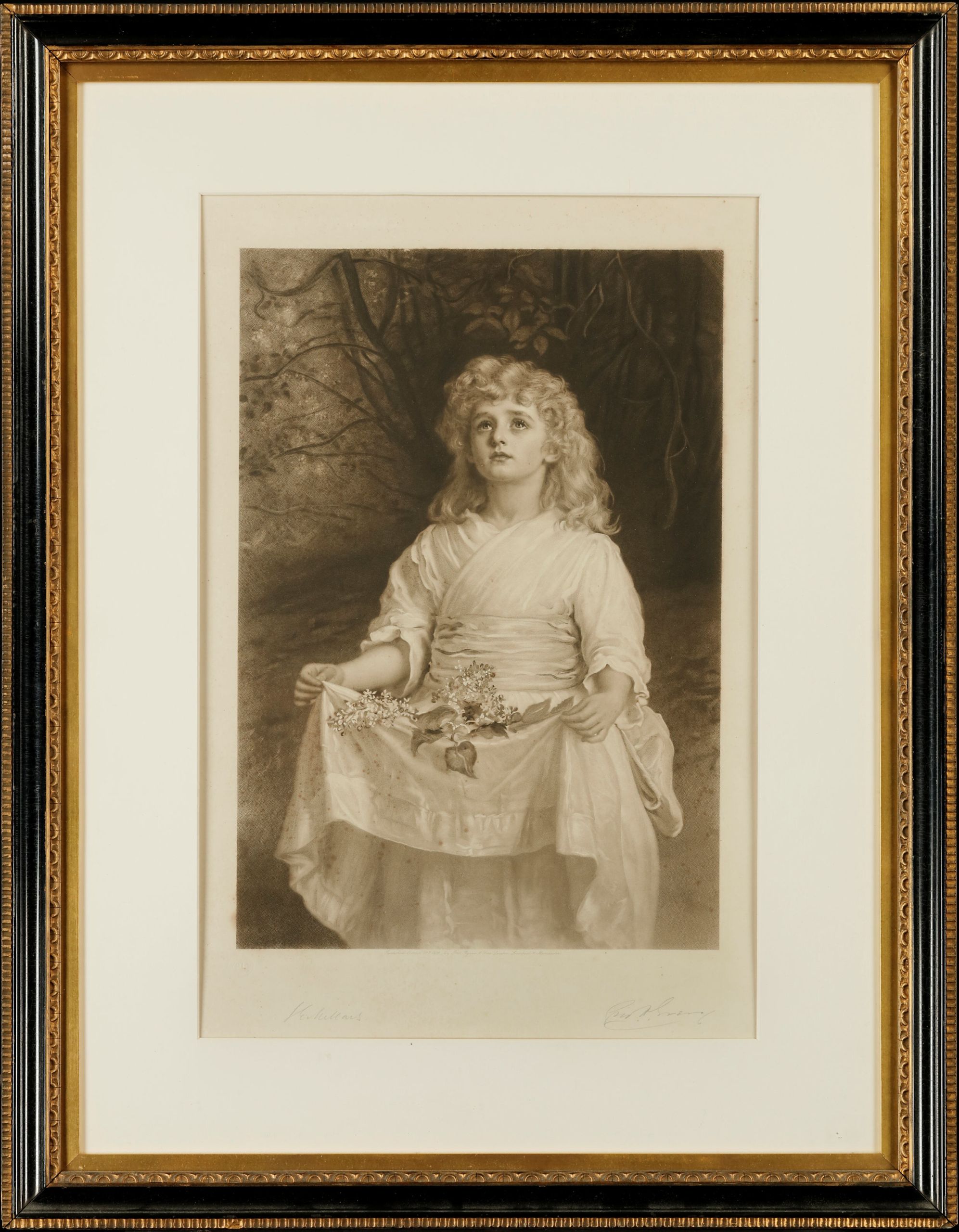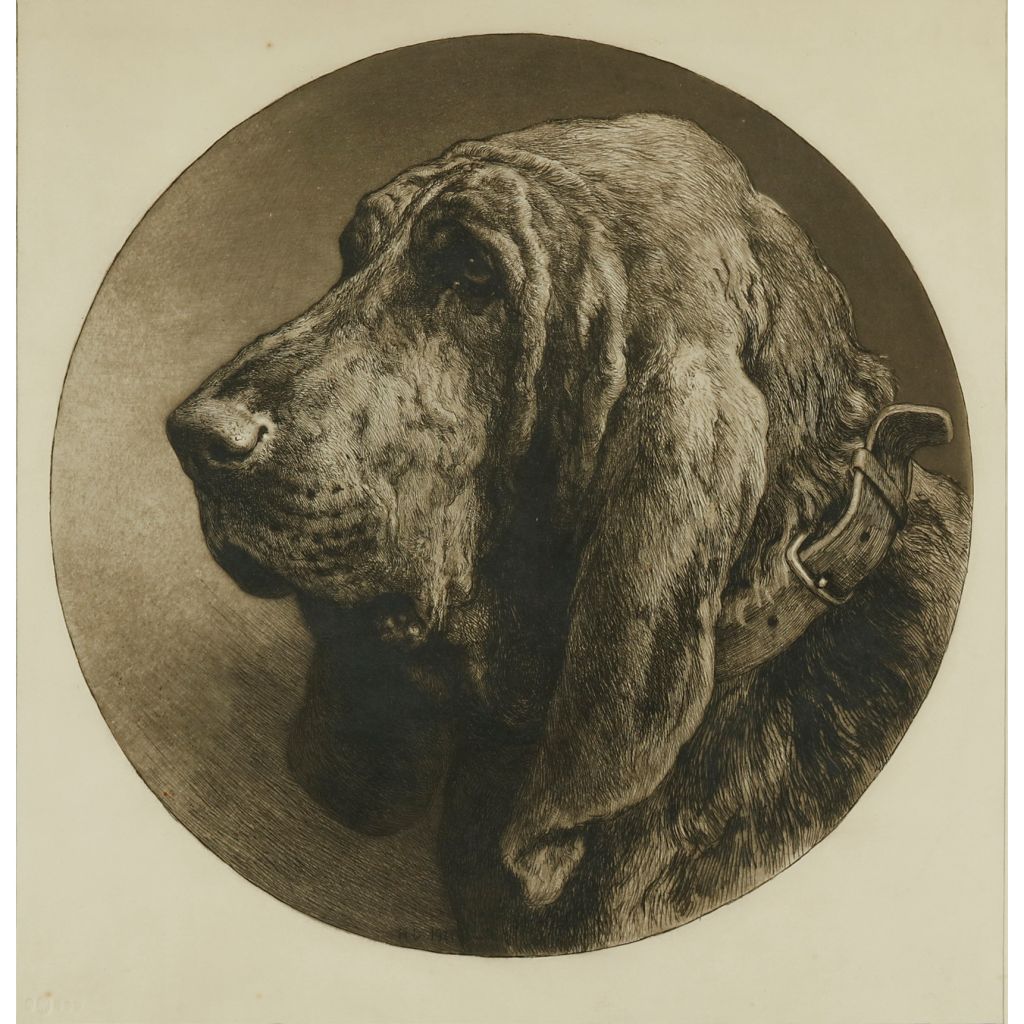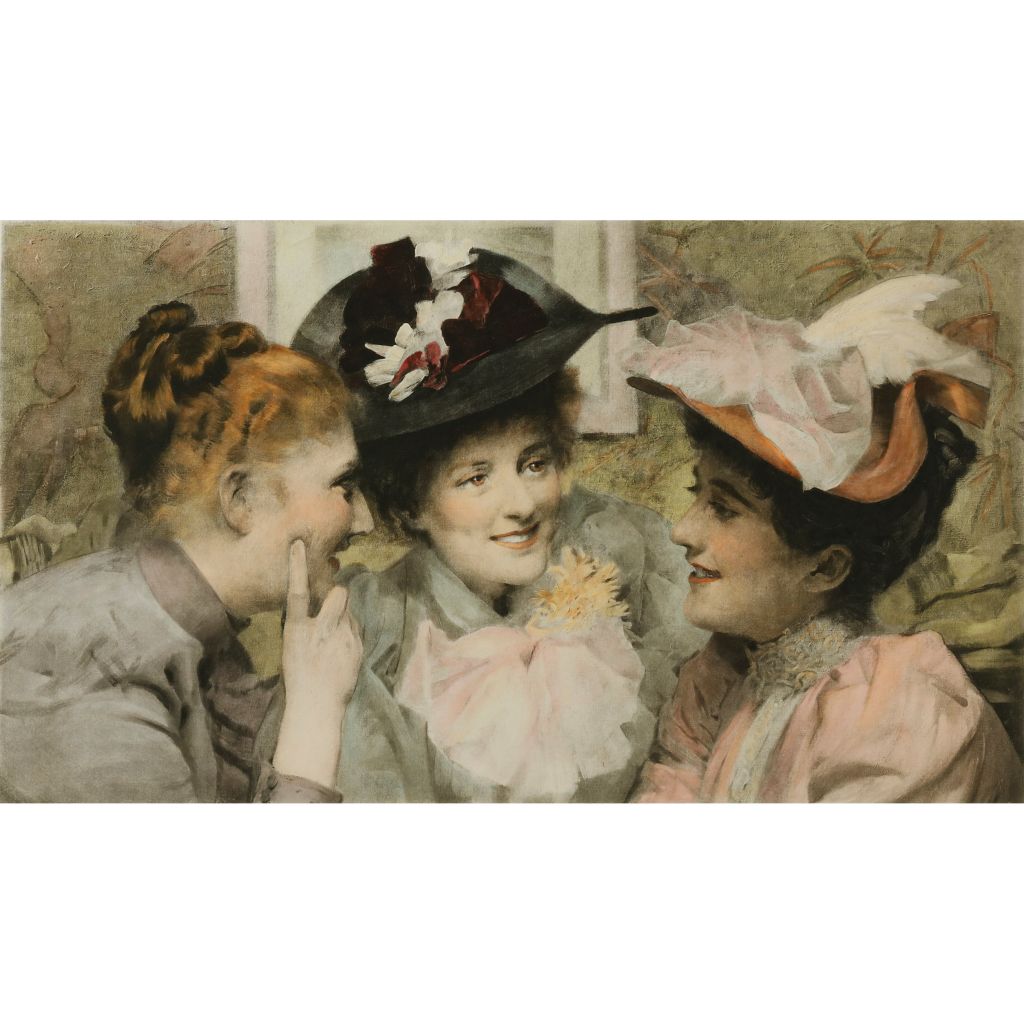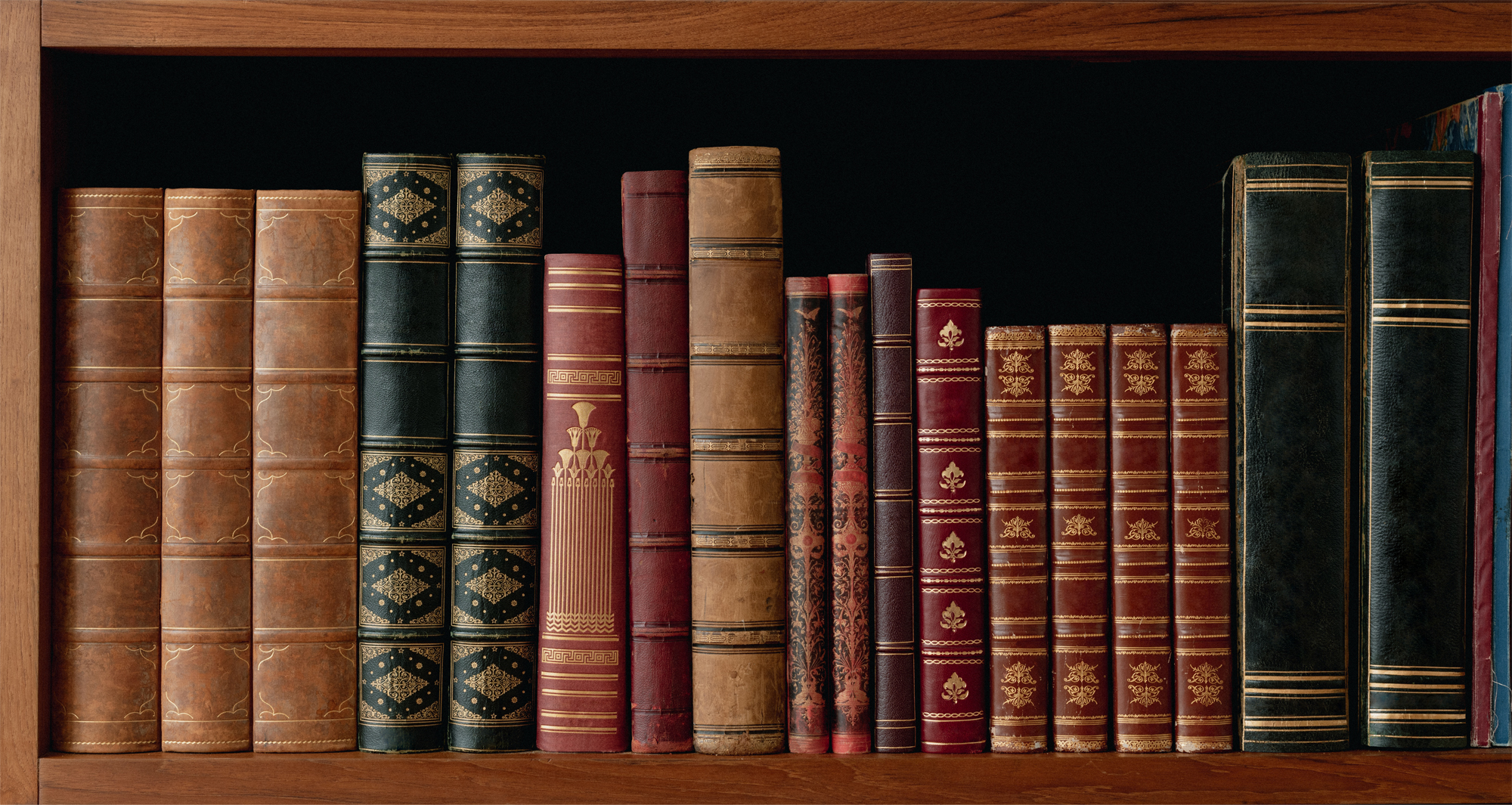AFTER SIR JOHN EVERETT MILLAIS-FRAMED ETCHING-LILACS
£375.00 £275.00
27% Off
AFTER SIR JOHN EVERETT MILLAIS
(1829 – 1896)
Lilacs
Etching
Signed artists proof
Frame size: 27½ x 21½ inches / 69.8 x 54.5 cm
Stock number: PB11/0121
Price: £375
Lettered below the image with publication line: “Published October 20th 1888 by Thos. Agnew & Sons London, Liverpool & Manchester”, signed below by the painter on the left and the printmaker on the right; the Printseller’s Association Blindstamp, lettered YPL, lower left.
The original painting is of a young golden-haired girl wearing a white dress with a salmon-pink sash. She holds up a spray of lilac flowers in the folds of her dress. The figure of the girl is set against a loosely painted woodland background.
After beginning his career as a founding member of the Pre-Raphaelites, by the end of the 1860s Millais had moved away from the painstaking truth to nature espoused by the group. In the late 1850s he had found it impossible to find buyers for some of his most innovative pictures and began to develop a style which would find greater favour with the public. In 1863 Millais was elected a Royal Academician and subsequently became a leading light in the British art establishment. Millais was not the only Pre-Raphaelite whose work began to change direction after the intense early phase of the group’s activities but, unlike other members of the brotherhood, he has often been accused of pandering to popular taste and allowing his work to sink into mediocrity. This painting of 1885 is typical of the many images of children Millais produced later in his career.
Recent literature on Millais has been concerned with re-assessing late works such as Lilacs which are sometimes considered to be overly sentimental or indicative of the harmful effects of commercialisation on the output of talented artists. Criticism of this kind of painting was expressed even during Millais’s lifetime by commentators such as William Davies or Emilie Isabel Barrington who worried that the proliferation of mass media and cheap reproductions (which Millais capitalised on) was vulgarising art. However, scholars such as Jason Rosenfeld and Laurel Bradley have pointed out that in the years after his Pre-Raphaelite phase Millais’s artistic programme was informed by an ongoing dialogue with the work of the Old Masters, particularly the eighteenth-century English painter Joshua Reynolds.
Millais’s later images of children can be seen as a more modern take on the eighteenth-century genre of the fancy picture. Reynolds painted children many times and it has been suggested that in echoing this tradition Millais was clearly signalling his wish to be seen as a successor to the great painters of the eighteenth century and earlier. Millais’s diploma work for the Royal Academy, A Souvenir of Velasquez, was an obvious nod to the Spanish artist’s depictions of children and this gives further weight to the theory that Millais saw himself as building on the achievements of the Old Masters. From about 1870 onwards Millais deliberately referenced the work of Reynolds in paintings such as Hearts are Trumps (1872), which reworks The Ladies Waldegrave of 1780-1, or Cherry Ripe (1879), which owes a debt to Reynolds’s Penelope Boothby of 1788.
The girl in Lilacs is wearing a dress which could be seen as loosely eighteenth-century in appearance and casts her eyes upwards with an expression which borders on melancholic. This mood of wistfulness is often found in Millais’s later pictures of children and has been linked to the artist’s sense of loss after the death of his second son, George Gray Millais, at the age of twenty in 1878. These images, frequently featuring natural settings with flowers and animals, refashion the eighteenth-century idea of the romantic child which was still current in the nineteenth century. Jason Rosenfeld has made connections between another famous depiction of childhood by Millais, Bubbles, and similar works by Jean-Baptiste Chardin and Édouard Manet. Rosenfeld makes the thought-provoking claim that there is greater psychological complexity in Millais’s meditative and introspective images than those of the great masters he modelled himself on.
We also have in stock an original watercolour by Sir John Everett Millais, here is the link






